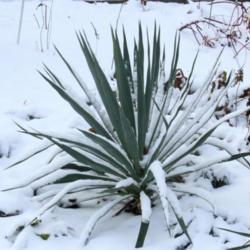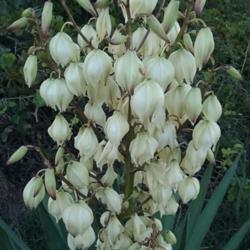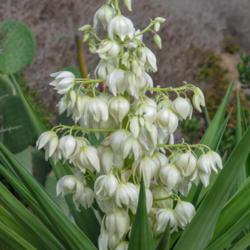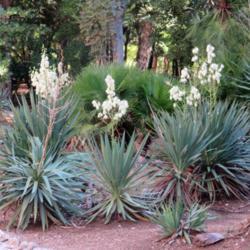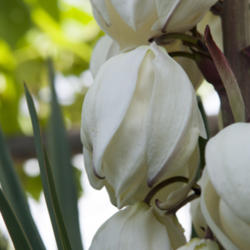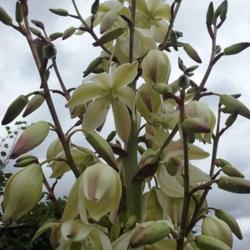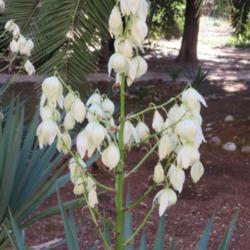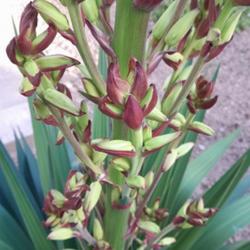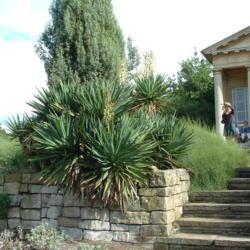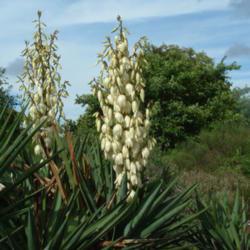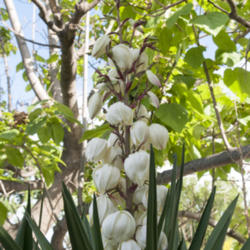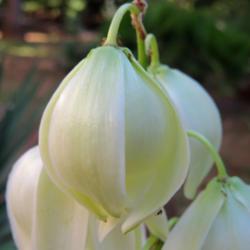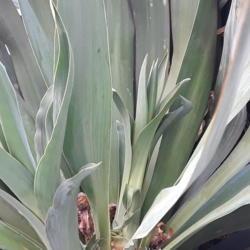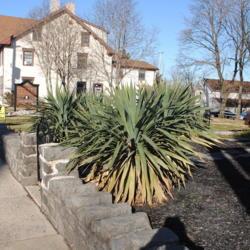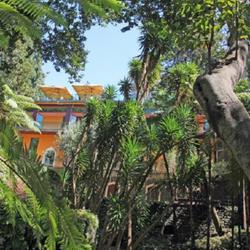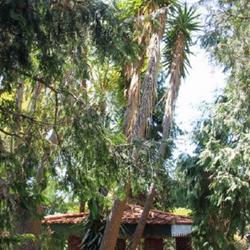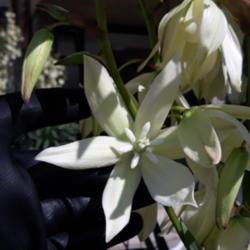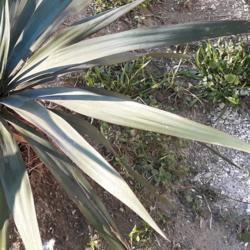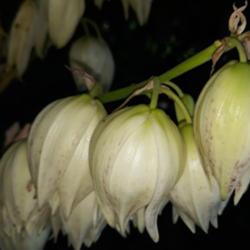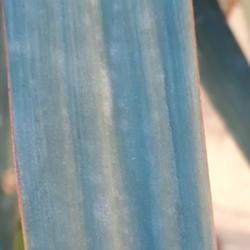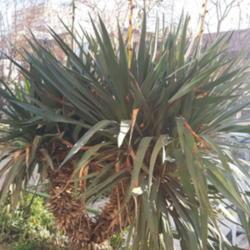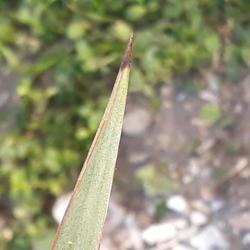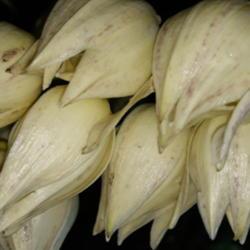Posted by
ILPARW (southeast Pennsylvania - Zone 6b) on Jan 3, 2020 10:57 AM concerning plant:
This yucca species is native to the southeast of the USA from coastal North Carolina through Florida. Its bluish-green leaves get to about 30 inches long and about 3 inches wide. The leaves bend down and are soft, and it is sometimes called Soft-leaf Yucca. It gets the typical spike clusters of pendent bell-shaped white flowers in July - August, liked by bees, butterflies, and hummingbirds. I've seen it planted in yards and landscapes every once-in-awhile in southeast Pennsylvania and Delaware. I've never seen it bloom up here.
Posted by
skopjecollection (SE europe(balkans) - Zone 6b) on Jan 4, 2020 2:36 AM concerning plant:
A hardy (zone 6 a/5b), shrubby yucca, with long leaves. Makes a large flower stalk, in the range from 60 to 90 cm (2,1 feet to 4 , 2 feet).
For its size, the trunk is somewhat thick, often about 5cm/2 inches. Leaves are dark green, with a glaucous tone. Texture is rough (like fine grain sandpaper).
The species possesses a hard woody spine on the end, but it's usually somewhat dull (not as sharp as those of aloifolia and fillamentosa).
The leaf margins are straight, smooth (not serrated like aloifolia) and have a woody/plastic feel to them.
It does not make a good potted plant, but does really well in the ground, even in poor conditions (wet clayish soil). It may make rhizomes to sprout new heads sometimes, instead of the conventional stem branching.
Posted by
Baja_Costero (Baja California - Zone 11b) on Jan 4, 2020 1:58 PM concerning plant:
Very common, somewhat weedy shrub/tree yucca to about 12-15 feet tall (often shorter, especially in less forgiving climates, but not taller) with many branches arising from a swollen base, and not a lot of branching above that point.
A number of varieties and cultivars are out there. Most are ridiculously easy to propagate from stem cuttings, even those without leaves or a growth point. This plant roots aggressively and is extremely drought tolerant, though it does better here (and flowers more) when given some water during our annual summer drought.
The leaves are not rigid but they may be straight or bent on the plant. They reach 13-20 inches long and are characteristically glaucous blue-green when they emerge (though sometimes less so after that point). The leaf margin may look smooth, but it has fine serrations that are evident by touch. The leaf tips are acute but spineless (this quite evident on younger leaves before the tips die back).
This plant can be distinguished from Y. aloifolia based on the absence of terminal spines (an acute leaf tip is not a spine), absence of marginal teeth, and less rigid leaves. Y. gloriosa can be distinguished from Y. gigantea (aka guatemalensis, elephantipes) based on its shorter leaves, smaller mature size, and a lack of shiny or smooth leaf texture.
This description is based on details in the recommended book by Mary & Gary Irish, as well as my experience with plants matching their decription in every way.

